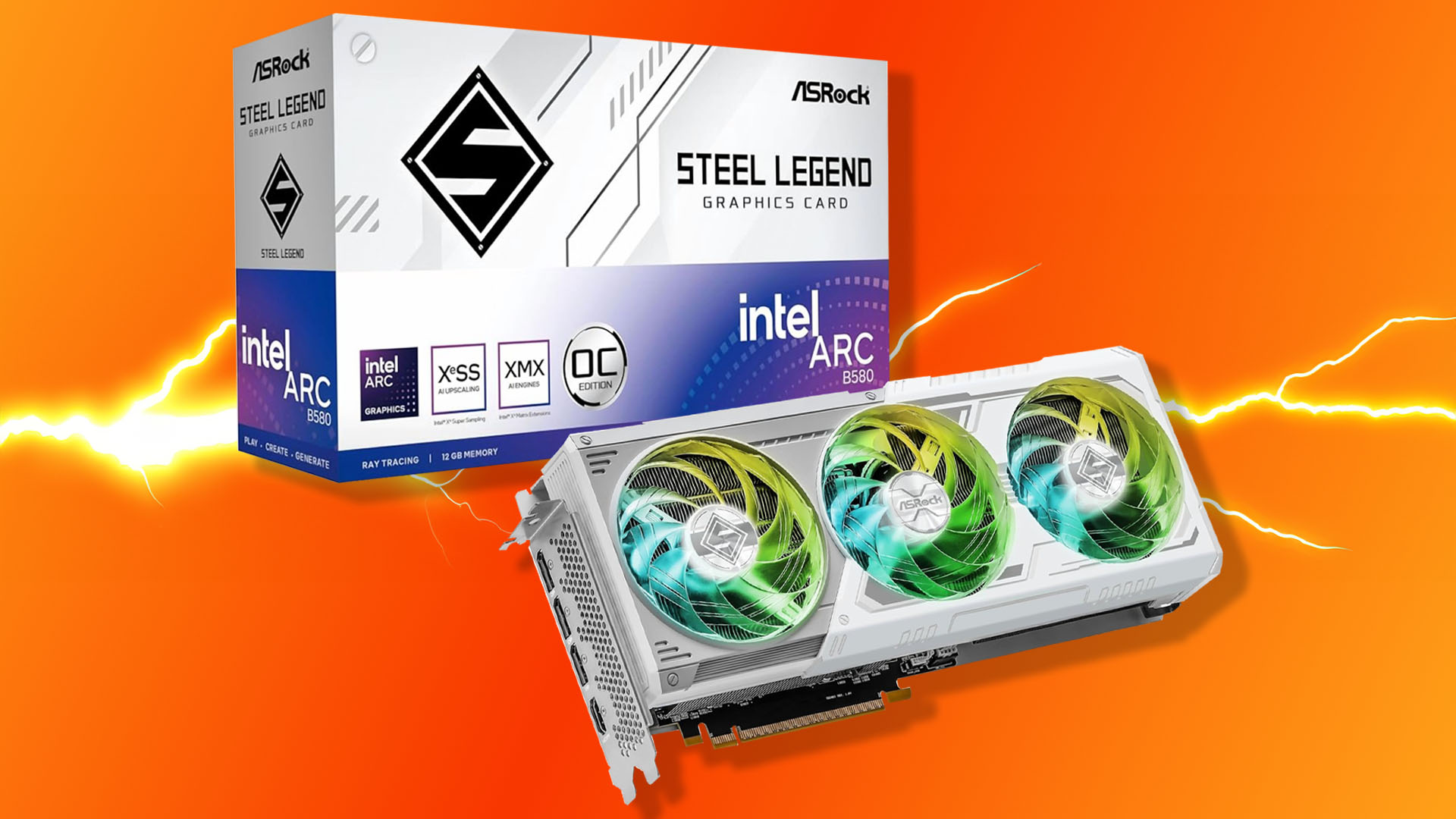More evidence is mounting that a new Intel GPU launch is coming for the holiday season, thanks to a massive faux pas by Amazon. The retailer just listed two new Intel Arc Battlemage graphics cards, made by ASRock on its site, including photos and a few of the specs details.
If the leak is right, these new cards with Intel GPUs look like lower mid-range contenders, going up against the likes of the AMD Radeon RX 7600 XT and Nvidia GeForce RTX 4060. The Arc B580 doesn’t look like it has any chance of threatening the Nvidia GeForce RTX 5090 for the very best graphics card title, but it looks as though Intel has made this new GPU architecture significantly more power-efficient than its predecessor.
Both listings have since been removed from Amazon, but I saw both of them over the weekend and can confirm that they were real. What’s more, the pictures and details have also been shared by Videocardz. The ASRock Arc B580 Challenger OC is the simpler of the two cards, with two fans and a single 8-pin PCIe power socket, which means Intel isn’t forcing board partners to move to a new 16-pin power socket with these cards.
The fact that there’s only a single power connector also means this graphics card can’t draw more than 225W (150W from the power socket and 75W from the PCIe slot). Comparatively, this card’s predecessor, the ASRock Arc B580 Challenger OC, had two 8-pin PCIe sockets, showing that Intel has potentially improved power efficiency with this generation, especially as this is an overclocked model that apparently runs the GPU at 2,740MHz. However, as Intel hasn’t revealed the stock clock speed, we can’t say if this is a large overclock or not.
The amount and speed of VRAM has also improved, with the basic A580 coming with 8GB of GDDR6 VRAM effectively running at 16Gbps, but according to these listings, the new B580 cards come with 12GB of GDDR6 VRAM running at 19Gbps. Other details gleaned from the listing include the interface, with the B580 apparently using an 8x PCIe 5.0 connection.
If that’s true, and these cards are indeed waiting in the wings to come out before the end of 2024, this means Intel has beaten both AMD and the Nvidia RTX 5000 lineup to the push to make PCIe 5.0 gaming graphics cards. It only has eight lanes, though, so it’s effectively the same speed as the 16x PCIe 4.0 interface.
Meanwhile, the other card is the ASRock Arc B580 Steel Legend OC, which ups the clock speed even further to 2,800MHz and also adds a second 8-pin PCIe power socket. Both cards have a single HDMI output and three DisplayPort connectors on the rear I/O plate, and both the boxes also draw attention to the cards’ support for Intel’s XeSS AI tech on the box, which uses Intel GPU XMX cores to process this resolution upscaling tech, which is Intel’s equivalent of Nvidia DLSS Super Resolution. The boxes also proudly boast about the cards’ XMX AI engines, suggesting that Intel is still committed to hardware-accelerated upscaling.
Of course, Intel hasn’t officially announced this GPU yet, and we also can’t say how it will perform based on an Amazon listing. However, from this listing, it’s clear that the B580 isn’t intended to do battle in the high-end GPU market, but is instead taking aim at the lower end of the mid-range sector.
We’ll be very interested to test these cards and see how they fare against the RTX 4060 and Radeon RX 7600 XT. The Intel Arc A580 launched at just $179 in 2023, and if the B580 comes in it a similar price, it could be a tempting budget option if Intel can support it properly.
You can read our thoughts on the last generation of the company’s GPUs in our Intel Arc A770 review, where we were impressed by the performance for the money, but were less enamored by the compatibility issues we faced. Let’s hope this is less of an issue for the next generation of Intel GPUs.



